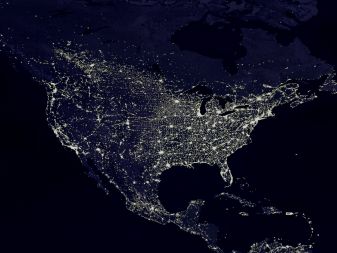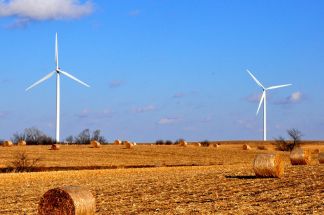Many Americans believe that helping the environment will hurt our economy. Although generally accepted outside the United States, U.S. politicians and their followers still argue about Climate change. According to Pew Research, only 20 percent of Republicans believe that climate change is a very serious problem. This is in stark contrast to 68 percent of Democrats who believe that climate is a serious issue.
The Bureau of Labor Statistics defines green jobs as either jobs in businesses that produce goods or provide services that benefit the environment or conserve natural resources or jobs in which workers’ duties involve making their establishment’s production processes more environmentally friendly or use fewer natural resources.

But can jobs be created out of the need to curb greenhouse gas emissions and mitigate climate change? Can fighting climate change ultimately build the economy and not be the job killer some people say it will be? Scientists agree that If the world continues to do nothing to lessen the effects of climate change there will be catastrophic events that will damage the present and future of the earth. Even though switching to clean energy will be difficult, it pales in comparison to what climate change has the ability to do, scientists say.
And the warnings do not come just from scientists. According to the Pentagon, climate change is an “urgent and growing threat to our national security.” Military analysts and leaders urge the nation to act now to reduce greenhouse gas emissions, lessen crude oil consumption and reduce our carbon footprint. While the United States may only feel a few effects of climate change now, such as a drought that lasts for months, warmer temperatures melting ice caps, which cause sea levels to rise or angry storms that prove fatal, these problems will become even more catastrophic within the next 20 years if nothing is done.
In a video by The Huffington Post, Jay Shetty explains the wonders of the world that will be disintegrated through climate change if people continue on the current course of wasteful behavior. Shetty goes on to say that many cures, medications and solutions for healthier lives comes from nature itself. From the great barrier reef to the Amazon rain forest, there are huge benefits to keeping nature in tact.
But many questions arise on how to actually curb climate change or even how to reverse some of its damaging effects. This is where green jobs finds a secure hold in the economy. A report conducted by Risky Business aims to increase awareness on how green jobs can actually create millions of jobs as well as save the United States $40 billion annually.
The first and biggest step is to use energy more efficiently by building sources of zero and low-carbon energy. This can be done by investing more energy efficient buildings, using solar, wind and nuclear energy to cut back on coal emissions as well as electrifying vehicles, which are one of the biggest emitters of greenhouse gasses.
“The natural capital is limited and we need to switch to green energy. However, the technologies are already out there and ready to be used,” Graduate environmental researcher Elias Bakhash said. “So one benefit is protecting the earth, meaning protecting humans. Also it creates tremendous new jobs, and stop importing fossil fuel from other countries and being an energy independent country.”
Co-chairs of the Risky Business project, Henry Paulson, Jr. and Thomas Steyer have created four pathways in order to decrease carbon emissions by 80 percent by 2050. The four models are: rely heavily on renewable energy, significantly expand reliance on nuclear power, include a substantial amount of fossil fuel power plants with carbon capture and storage and generate electricity from a relatively even mix of these three zero to low-carbon resources.
“Completely transitioning towards renewable energy will be very costly at first, but this investment will be worth it as we will not have to worry about increasing fuel prices and will have sustainable energy,” Graduate environmental researcher Alyson Perez said.

Paulson and Steyer estimate the amount needed in order to cut carbon emissions by 80 percent by 2050 would be $220 billion per year from 2020 to 2030, $410 billion per year from 2030 to 2040 and $360 billions per year from 2040 to 2050. But the reward and savings from this investment shows each year. The savings would be $700 billion per year from 2040 to 2050.
Not only is the switch to green energy saving the Unites States money but it’s also creating 460,000 construction-related additional jobs by 2030. These skills and knowledge can be taught to coal mining as well as gas and oil-related jobs that will be on the decline after this shift.
“These workers have the potential to be retrained in the field of sustainable energy. If we move towards more renewable energy, we will need many workers to install solar panels, wind turbines, and to maintain and repair all of the equipment,” Perez said. “In the long run, these jobs will last longer than their current jobs since coal based energy is being phased out and it will also be much better for their health since working in the coal industry has serious health implications.”
If the transition is started now in 20 years, the United States and the whole nation itself will see a major improvement to human life such as living longer, less cardiovascular problems and diseases, poverty will start to diminish and less conflict.
“This is an important time to make the switch. We are already at record high levels of carbon dioxide in the atmosphere. The impacts of climate change will only be amplified if we do not start to transition now,” Perez said. We will have increased drought and heat waves which will impact our food supplies and potentially cause food shortages. Increased temperatures can also cause heat waves that can be dangerous for infants and the elderly. Some studies have said we will have increased political conflict and social unrest with climate change so there may be more violence and wars.
While there is risk associated with any major change, there is also great reward. But it’s the duty of the United States to lead by example as the forerunner of change and forward momentum on this issue. We are not the only ones at fault; it will take a larger global commitment to transition to green energy which results in the implementation of green jobs. Political leaders will have to band together over one common thread; sustaining life on earth. It is their duty to be leaders of the next generation. By advocating, taking action and creating awareness, we can urge these policy makers to redefine the next 50 years of rapidly a changing environment.
“Green jobs would provide us with the inputs and resources that the world needed to measure the environments impacts also design strategic plans for the business companies to work toward renewable energy and to show them the beneficial from this shift,” Bakhash said.



